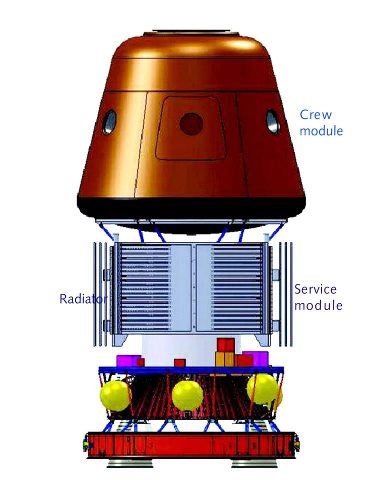ISRO Working On Technologies That Have Potential To Put Humans Into Space
Speaking with the media at the Mangalore University's 32nd convocation, Mr. K Radhakrishnan, Chairman, ISRO shared that the organisation is working on new technologies that explores possibilities of putting humans into space. Though there is no approved program for this, he spoke about a technology called 'Crew Module' that is going to be tested with the experimental flight of GSLV MK-III launch vehicle to be launched in May or June 2014. The research work being done at ISRO has capabilities of taking human beings into space at approximately 275-400 kms from Earth, keeping them their for a week, and bringing them back to Earth safely. To achieve this, ISRO is working on developing environment control and life support systems.
In addition to that, they will be developing a space suit fit for human beings and testing and detection of failures on board a proposed flight in case of an issue is being carried out so that the crew can be ejected to safety in time. The crew module's sized down versions are being tested in the ISRO Labs. While a PSLC can carry one human, a GSLV can carry two humans, whereas a GSLV MK-III can take three humans. Work on the GSLV MK's integration is being done at Sriharikota, while the crew module is being worked upon at Thiruvananthapuram.

With three times higher thrust than the GSLV that took off in January, the GSLV MK-III will have its maiden development flight by 2016. ISRO has tied up with NASA on a program to develop synthetic aperture radar. ISRO is going to work on S Band synthetic aperture radar, while NASA will work on L Band synthetic aperture radar. The project is in planning and discussion state and will being after receiving government approvals. ISRO will develop the satellite for the same and the launch that will take place in 2020. We also got information about the Astrosat (an astronomical satellite) launch in 2015. This satellite would have six equipment parts built by the Tata Institute of Fundamental Research and the Indian Institute of Astrophysics.
After ISRO shared its <a href="https://www.crazyengineers.com/threads/isro-shares-official-facebook-twitter-pages-in-a-move-against-fake-profiles.72280">ISRO shares official Facebook & Twitter pages in a move against fake profiles</a> back in December 2013, it has received a tremendous response on Social Media. Radhakrishnan believes that youth is interested in science and is actively discussing about it. Moving forward, ISRO plans to explore the potential of YouTube and may offer live webcasts to the global audience in near future. What are your thoughts on that? Share with us in comments.
Source: <a href="https://timesofindia.indiatimes.com/home/science/Isro-developing-technologies-to-put-human-payload-into-space-Isro-chief/articleshow/30955643.cms" target="_blank" rel="noopener noreferrer">Isro developing technologies to put human payload into space: Isro chief - Times of India</a>
In addition to that, they will be developing a space suit fit for human beings and testing and detection of failures on board a proposed flight in case of an issue is being carried out so that the crew can be ejected to safety in time. The crew module's sized down versions are being tested in the ISRO Labs. While a PSLC can carry one human, a GSLV can carry two humans, whereas a GSLV MK-III can take three humans. Work on the GSLV MK's integration is being done at Sriharikota, while the crew module is being worked upon at Thiruvananthapuram.

With three times higher thrust than the GSLV that took off in January, the GSLV MK-III will have its maiden development flight by 2016. ISRO has tied up with NASA on a program to develop synthetic aperture radar. ISRO is going to work on S Band synthetic aperture radar, while NASA will work on L Band synthetic aperture radar. The project is in planning and discussion state and will being after receiving government approvals. ISRO will develop the satellite for the same and the launch that will take place in 2020. We also got information about the Astrosat (an astronomical satellite) launch in 2015. This satellite would have six equipment parts built by the Tata Institute of Fundamental Research and the Indian Institute of Astrophysics.
After ISRO shared its <a href="https://www.crazyengineers.com/threads/isro-shares-official-facebook-twitter-pages-in-a-move-against-fake-profiles.72280">ISRO shares official Facebook & Twitter pages in a move against fake profiles</a> back in December 2013, it has received a tremendous response on Social Media. Radhakrishnan believes that youth is interested in science and is actively discussing about it. Moving forward, ISRO plans to explore the potential of YouTube and may offer live webcasts to the global audience in near future. What are your thoughts on that? Share with us in comments.
Source: <a href="https://timesofindia.indiatimes.com/home/science/Isro-developing-technologies-to-put-human-payload-into-space-Isro-chief/articleshow/30955643.cms" target="_blank" rel="noopener noreferrer">Isro developing technologies to put human payload into space: Isro chief - Times of India</a>
0
